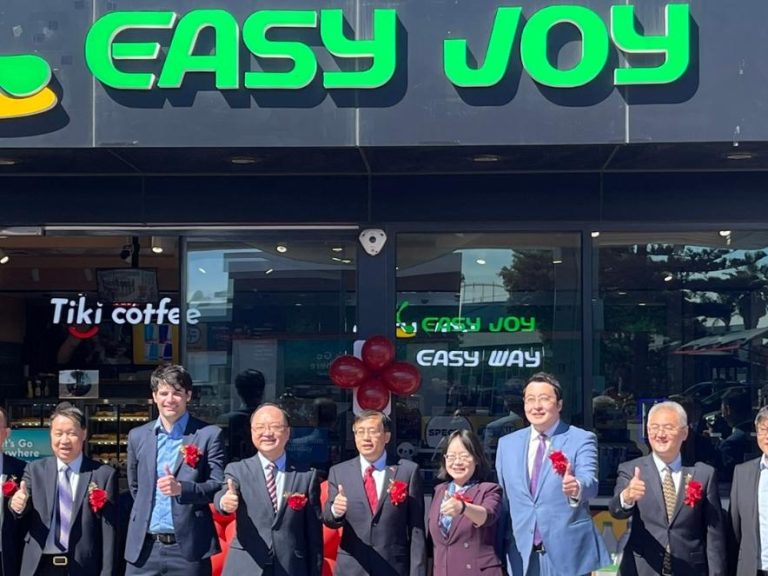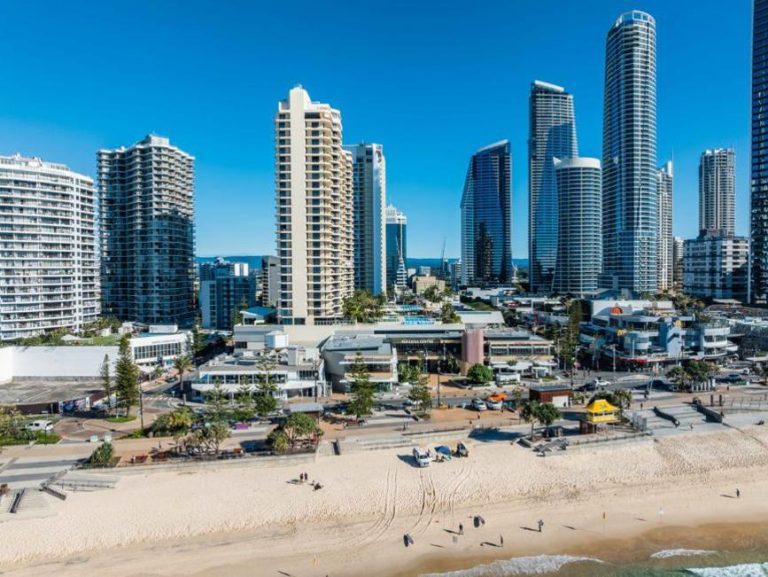Soft serve summers: The enduring legacy of Mr. Whippy
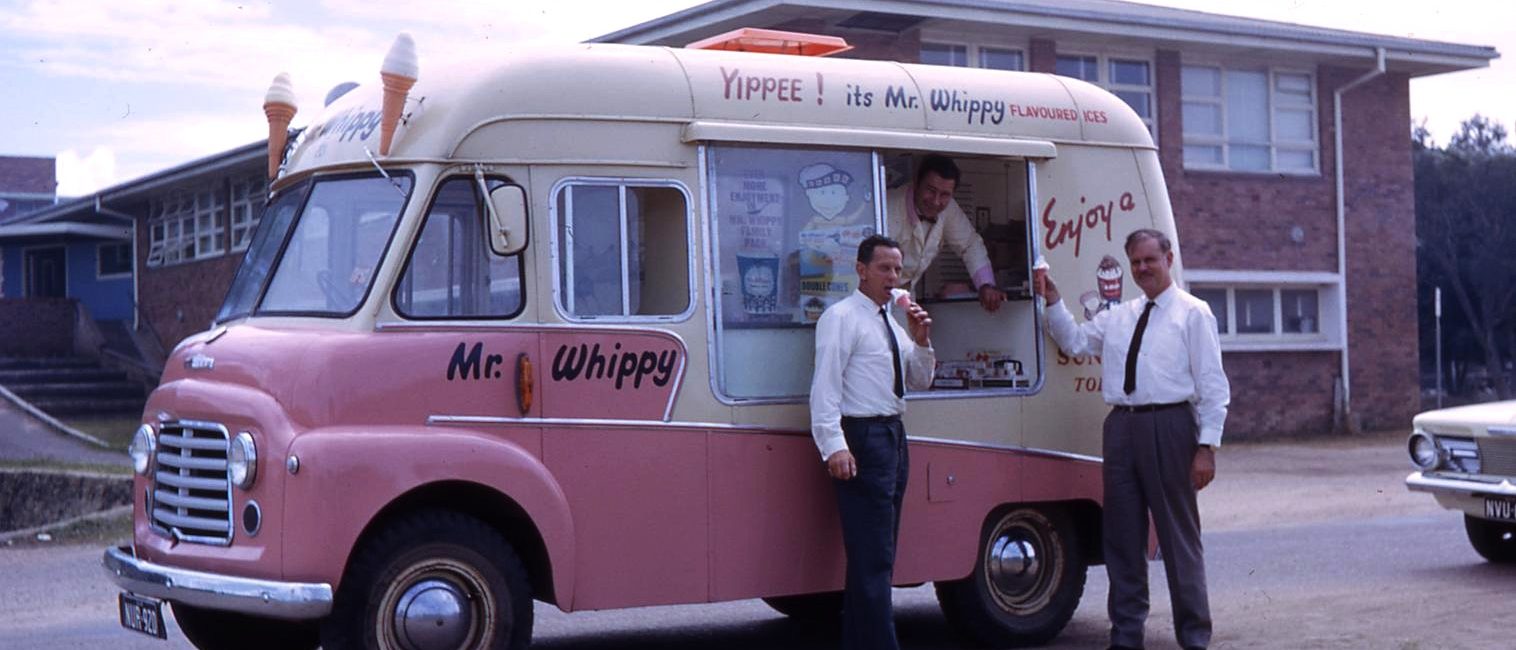
It was the business and cultural phenomenon whose sugary highs may have peaked more than half-a-century ago, but in a number of suburbs around Australia, Mr. Whippy vans are still trucking.
In South-East Queensland, that rinky-dink Greensleeves melody rings out through the streets of Hervey Bay thanks to Robby Staff, a second-generation business owner who runs a fleet of vintage Mr. Whippy vans.
His business has experienced its fair share of ups and downs over the decades, though Mr Staff has witnessed a renewed public interest in mobile soft serve.
“Food trends are very cyclical and in the last few years things have really picked up,” he explained. “All of our vans are flat out most evenings.”
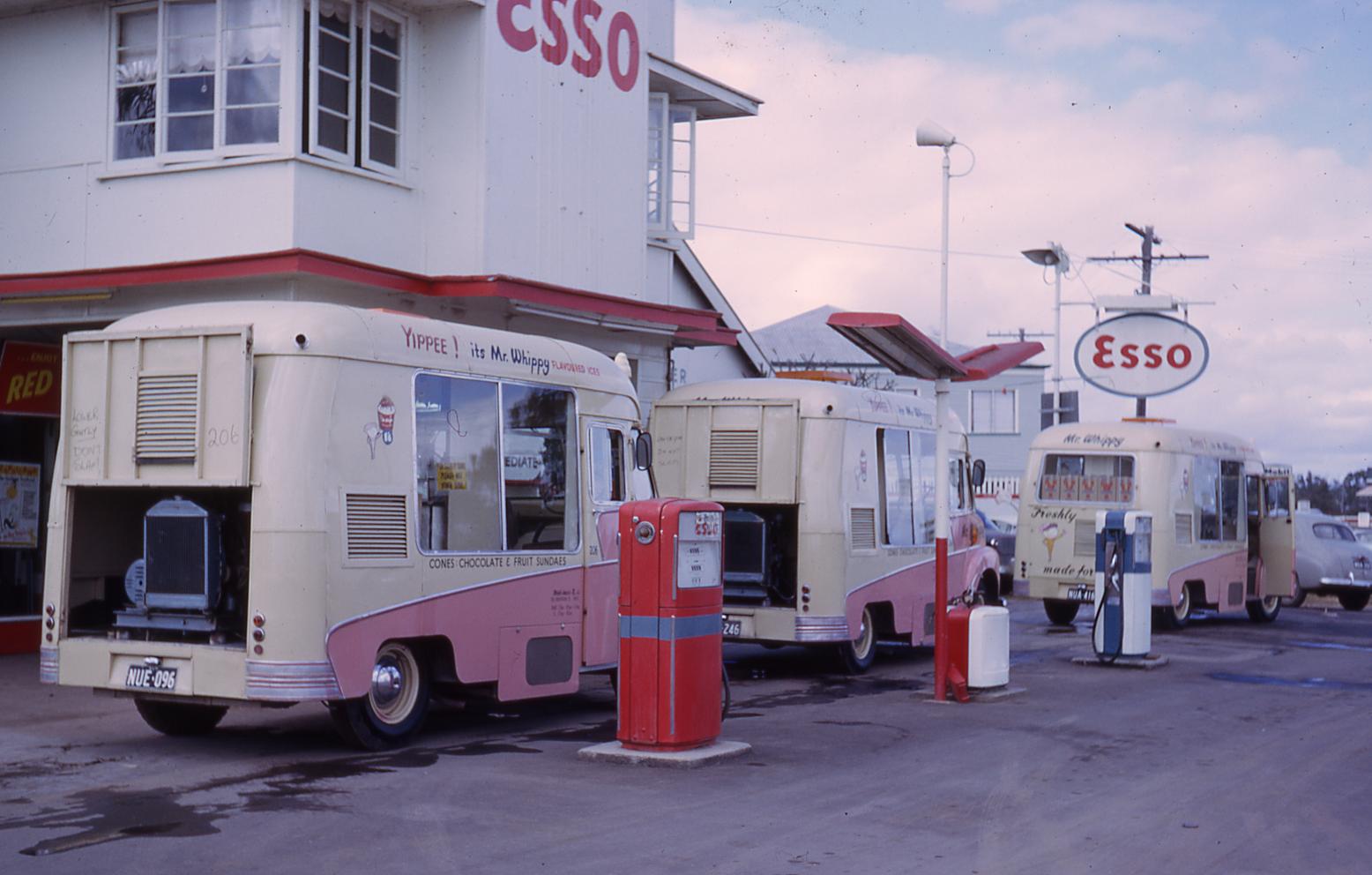
Mr. Whippy arrived in Australia from the UK in the early 1960s. Picture: Supplied – Robby Staff
The soft serve game runs long and strong in Mr Staff’s family.
His father, Bob, was an employee of the original Mr. Whippy company when it first arrived in Australia from the UK in the early 1960s.
“It was a cultural phenomenon which had a huge impact on that generation,” explained Mr Staff, who helped with the research of a 2012 book, The Mr Whippy Story.
“You have to remember, Mr. Whippy predates the arrival McDonald’s and Kentucky Fried Chicken in Australia. It was the first overseas fast food concept to really take off here.”
Sugary beginnings
Inspired by the US operation, Mister Softee, the Mr. Whippy ice cream van company was founded in Birmingham, England, in 1958 by Dominic Facchino – an English born entrepreneur of Italian descent.
Australian businessman William George Kendell struck a deal to launch the franchise down under in 1962, following a chance meeting with Facchino in Earl’s Court in London.
10 pink and white Commer Karrier vans were shipped out to Sydney that same year. They proved an instant hit.
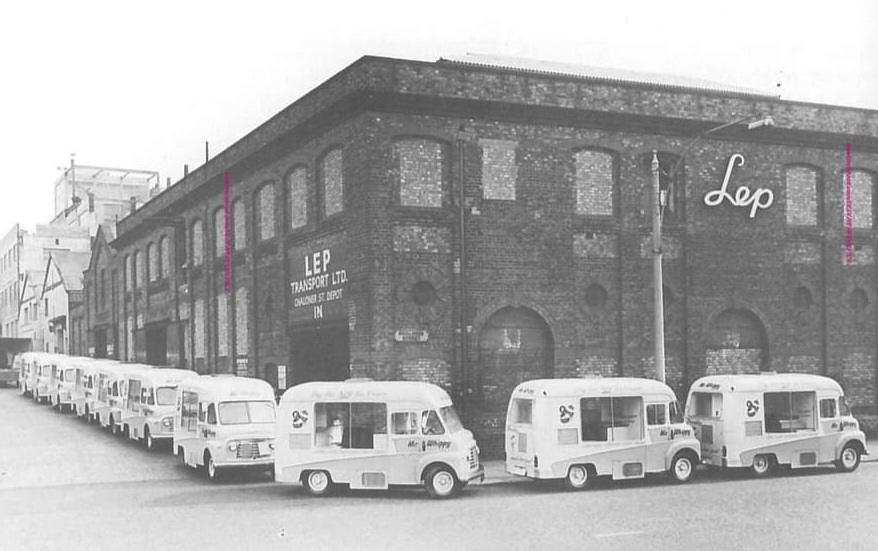
10 pink and white Commer Karrier vans were shipped from the UK to Sydney in the early 1960s. Picture: Supplied – Robby Staff
More vans soon followed, hitting Melbourne and other capital cities. In 1964, the Mr. Whippy company also extended its operations to New Zealand.
“Those original Commer Karrier vans were like the holy grail of ice cream vans,” remarked Mr Staff.
“The reaction from the public at the time was absolutely phenomenal. The drivers of those vans were like rock stars.”
In 1965, a Mr. Whippy van even made an appearance in The Beatles’ 1956 film, Help.
The sweet sound of success
After Mister Softee pioneered the concept of using music to announce the arrival of ice cream trucks to the neighbourhood, Facchino adopted the folk song Greensleeves for his own fleet of Mr. Whippy vans.
According to australianfoodtimeline.com.au, Facchino favoured Greensleeves because of a mistaken belief the song was written by King Henry VIII – one of his favourite historical figures.
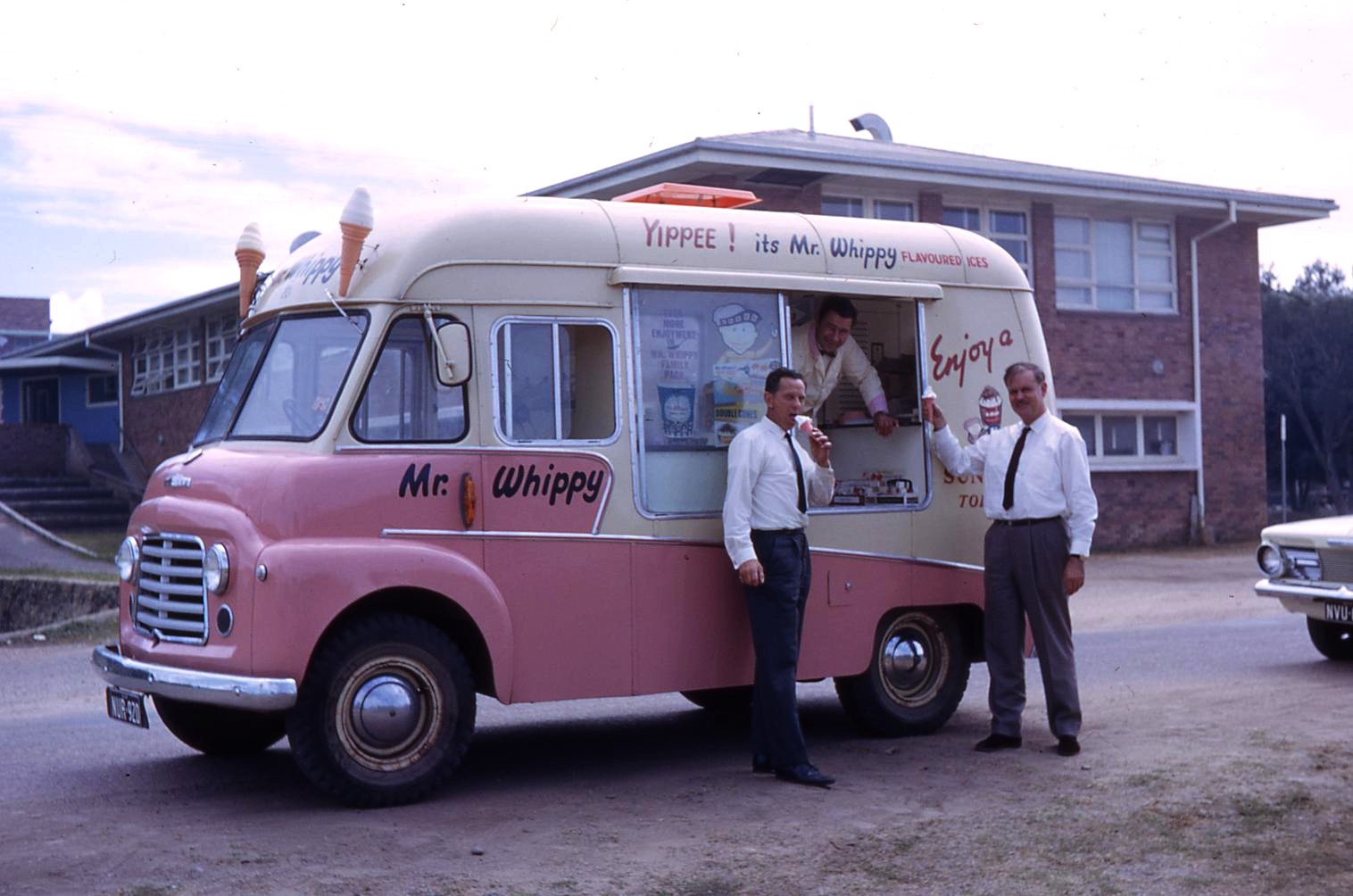
Australian businessman Bill Kendell (right) in 1963. Picture: Supplied – Robby Staff
Dene Menzel, creative director of music branding agency, Branthem, said the unique song choice became a key driver of the businesses’ success.
“Using Greensleeves was a master stroke, because the music itself is very simple. Its bell-like instruments and music-box style means it can easily be heard from a distance,” he explained.
Mr Menzel said music has long been an effective tool for businesses to amplify brand awareness and create “stick-ability” in the minds of customers.
“Greensleeves evokes strong emotions and feelings of childhood, nostalgia and happiness – it was perfect for Mr. Whippy’s target market of children and families.”
“The two became so synonymous they were basically interchangeable.”
The sugar comedown
In 1966, the UK company was acquired by Walls and Unilever, however it continued to operate the franchise in the antipodes.
By the mid-1970s, the company had imported around 200 Commer vans to Australia and 50 Austin vans to New Zealand.
However, by that time, Mr. Whippy’s profits had begun to free fall.
The company’s fleet of physical vehicles were sold to private operators and the Mr. Whippy brand began a new retail life in shopping centres across Australia.
What’s in a name?
As outlined by Sarah Matthews, a researcher at State Library Victoria, one of the key factors which led to the deterioration of the Mr. Whippy brand was competitors flooding the market.
Painting their vans pink and white, these imitators also appropriated the Mr. Whippy name for their own ventures.
Robby Staff said the name Mr. Whippy is so strong it ultimately became both a blessing and a curse for the brand.
“It’s like Biro for a pen or Hoover for a vacuum cleaner – the name is so iconic that even to this day people still use ‘Mr. Whippy’ when talking about any ice cream truck.”
These imitators had also knocked off the iconic Greensleeves song for use in their vans. With the song in the public domain, there was little Mr. Whippy executives could do by way of copyright infringement.
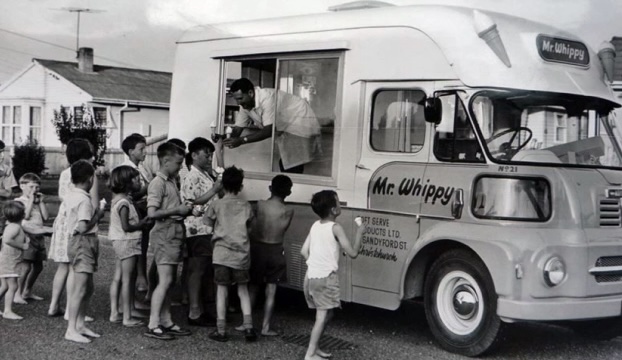
The brand ‘Mr Whippy’ has become synonymous with all ice cream vans. Picture: Mr. Whippy
Matthew Crouch, marketing expert at Soto Group, said it was unsurprising such a great idea was ripped off by people mimicking a brand that had proven to work.
“40 years ago, the degree of priority given to trademarks and the preservation of brand integrity was sadly not as important as it is today,” he explained.
“Today we know more and can do more to monitor this than ever before. But it still takes constant work and a willingness to pursue anyone who infringes on your brand.”
In 1982 – either by a mistaken lapse or an intended sale by the UK company – the trademark ‘Mr. Whippy’ was registered in Australia by ice cream parlour company Mr. Whippy Pty Ltd.
As a result, private van operators who had bought vehicles from the original UK company were forced to come up with their own trading names.
Mr Soft Serve, Mr Softy, Miss Whippy and Super Whip were all used in an effort to capture the public’s attention.
Whippy evolution
At the turn of the millennium, the business was bought by the Victorian based Franchised Food Company. At that time, there were 30 retail outlets on Australia’s east coast.
In 2015, Franchised Food Company announced it was taking Mr Whippy soft serve back to the streets, this time using three-wheeler tuk tuks instead of vans.
At the time, FFC chief executive Stan Gordon said the company would pursue imitators found using variations on the Mr. Whippy name or playing Greensleeves to sell ice-cream, having apparently purchased the trading rights to the song.
“Everything you see: Zippy, Hippy, Whippy is breaching my trademark,” he told The West Australian. “I’ve turned a bit of a blind eye until now but I won’t be any longer.”
Robby Staff told realcommercial.com.au that Mr Gordon had contacted him at the time regarding his Mr. Whippy van business in Hervey Bay. Fortunately, it was for positive reasons.
“He called me up one day and we had a great discussion about the business. He was impressed with what I was doing and gave me permission to keep using the name.”
A new era
DIB Group became the latest company to acquire the Mr. Whippy brand in 2019.
Since the acquisition, the company has introduced Mr. Whippy thick shakes and slushies to 300 Metro Petroleum service stations across NSW, Victoria, Queensland and Western Australia.
View this post on Instagram
In the last few years, Mr. Whippy vans and kiosks have been available for hire, with DIB Group targeting their offerings to the weddings and events market.
So far, Mr Staff hasn’t received any contact from DIB Group.
“I’d be happy to hear from them. I think what they’re doing with the brand is really exciting and I’d love to be involved,” he said.
“I’ve been passionate about Mr. Whippy for almost my whole life. And I think with any business, passion is the most important ingredient.”


